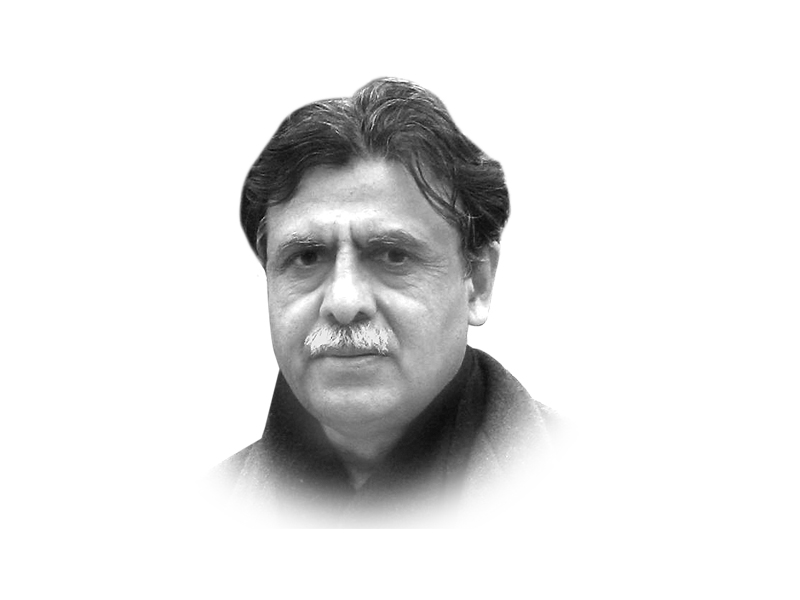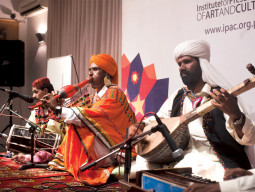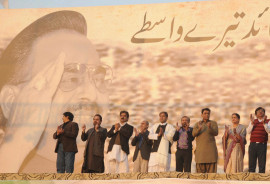
Ayesha Siddiqa, in a recent article on these pages, has made interesting observations about the changing demographic profile in the Seraiki region of southern Punjab. Her premise for creating a separate province, however, needs deeper understanding of the dynamics of the federal system, which markedly differentiates Pakistan from unitary states that have opted for the creation of more provinces. I have always held the view that creation of new provinces is a corollary of a unitary form of government and has never adjusted well with the federal system of government anywhere in the world. Decision-makers in such systems have had to seek recourse to other means of fiscal transfers and cultural empowerment within the federation’s constituents. Examples of Turkey, Iran, Afghanistan and Thailand, which all have unitary form of governments, are quoted with gay abandon. The provinces in these countries are similar to the districts and divisions in Pakistan in terms of empowerment. Citing the Indian example also misses the point. The Indian Constitution does not define the country as a federation. It is a union of states with certain recognisable federal features. The centrist dispensation in India is overbearing. It gives concurrent and overriding powers to the union, with presidential decrees having sent state governments packing on a number of occasions.
The previous PPP government had passed a resolution in the Senate for the creation of a province in Punjab’s Seraiki belt. The move, however, reflected the poor homework of the party as it did not evolve a consensus in the National Assembly nor did it have the requisite numbers in the Punjab Assembly. Above all, creating a separate province was contrary to the thinking of the elder generation of the party leadership. The architect of the 1973 Constitution made it doubly difficult to change the configuration of the existing provinces and required concurrence of the assembly of the affected province with a two-thirds majority. This idea had a rationale. At the time of independence, it was the constituent units that gave birth to the republic and not the other way round. The provinces preceded the federation.
The current imbroglio in south Punjab and in other regions can be likened to the core-periphery asymmetry. The core (Lahore) and the periphery (Multan) are locked in an asymmetrical relationship, which has widened the economic gap between them and has also resulted in a real and perceived cultural depravity. If we accept this analogy, then we are faced with yet another dilemma. How do we look at the asymmetry between another core, Multan, and its periphery, Rajanpur, falling within the same belt? The unit of analysis, therefore, cannot be a geographical domain alone, as a new province may well provide grounds conducive to the circulation of the elite but may not necessarily address the real issue.
The Seraiki language has been a powerful social and cultural metaphor and purveyor, which cuts across provincial boundaries. It is one of the most widely spoken and understood languages of Pakistan. The dilemma here, however, stems from the fact that while transforming this expansive cultural force into a political narrative, it is being confined, in tangible terms, to only the southern part of Punjab, which is far more multi-ethnic and diverse today than ever before. Those who are familiar with the history of colonisation and resettlement in Punjab are aware of the population mix of the region. At this point in time, the city of Multan may well be the largest non-Seraiki speaking city in the whole region. That does not mean that third generation settlers in the region are less sensitive to the Seraiki ethos. They have indeed imbibed the local nuance remarkably well, and at the same time, are bilingual in many ways. The point I wish to make is that any move to create a separate province will change the nature of internal discourse of the region and the buck will just not stop here. It will have instant bearings on other parts of the federation.
Considering the intractable procedure laid down in the Constitution, one does not see any breakthroughs in this regard in the foreseeable future. There is, however, room for manoeuvre within the given policy constraints. We need to opt for a regionalised development model by declaring South Punjab a region within the existing federating unit through an enactment passed by the provincial assembly. Formula-based fiscal transfers should be secured through legislative cover and parliamentary oversight. This arrangement should forestall any move by the provincial executive to reappropriate any sum, once allocated, out of the region. Block allocations, which serve as carrot and stick tools for the government, should be stopped forthwith, or at least, capped at a bare minimum through legislation.
There is also a need to create regional service cadres instead of lumpy, unmanageable provincial cadres. Recruitment, placement, transfer and promotion of lecturers and medical officers, for instance, should be at the regional level. Lateral inter-regional movement should be at the level of grade 20 and above. This will only require amendments to the service rules and will take care of the issue of regional representation as well.
For the promotion of culture and language, the universities of the region should play a more strident role. The government needs to come up with a well-thought out intervention for quality education in the region, aligning it with professional requirements. The universities of the region have played a commendable role but they need a bigger push to bring about a further turnaround. Also, as agriculture will continue to be the mainstay of the region’s economy, it needs a big thrust in the strategic area of value addition. This may well call for appreciable investment in research and development.
All the above-mentioned interventions have to be mounted in tandem in an imaginative manner. Is the government and our leadership ready for that? Let us wait and see.
Published in The Express Tribune, February 18th, 2014.
Like Opinion & Editorial on Facebook, follow @ETOpEd on Twitter to receive all updates on all our daily pieces.
COMMENTS (13)
Comments are moderated and generally will be posted if they are on-topic and not abusive.
For more information, please see our Comments FAQ














































@Saeed: "Interesting article and putting forward unconventional solution; ” Regionalised Development Model”. One must look into it and see if it is workable. This approach of regional development model may save Pakistan from another other front of chaos revolving around the politics of provinces."Your comments provide a food for thought specially to the political thinkers as well as leaders who with the help of this model might be able to work out a solution to the Sindh rural and urban issue too which under the slogan of a separate province might create a devastating impact.
@Pakistan Khan: Bravo. way to go man.
@Cheema: You should do some research man.I don't understand why Punjabi chauvinists forget that before Ranjeet Singh (a hero for Punjabis of course!) invaded Multan , Saraiki areas were never part of Takht-e-Lahore. You can say whatever you want about Saraiki being a dialect of Punjabi;the fact remains no Saraiki considers himself "Punjabi". Well if you cannot tolerate Saraikis, then my friend you can always go back to your Sikh brothers in Indian Punjab! Pakistan belongs to all the nationalities including the Saraikis not just to the Punjabi chauvinists. So accept it or leave our land!
@Cheema: No blaming the government, if this is not the Govt's job then there is no need to any government, u know in the West first the governments faciliatate their people, the tax money is used for the people not for the personal use.Community comes later,constitutionaly it is the state which has to deliver.
in my opinion the issue is not of creating a new province but the empowerment of people and that can be easily done through local bodies elections and as author rightly mentioned through regional development model.
Encouraged by comments I would like to dilate that exercise of creating more provinces can not be taken up on stand alone basis .it will snow ball into all other provinces which are far too diverse and less integrated , virtually unravelling the configuration of the whole Federation . The moot point is ,are we prepared for that , if so the protagonists can go ahead and muddle through the constitutional maze . In India creation of a province is a simple matter of resolution , yet it has taken about deliberation of decades to creat a new entity and yet it did not proved to be the option, Assam was split up in seven states and it is still festering with insurgency . Provincein our case is misnomer .these are like states and we have to work out dispensation within that .Through coucil of common interest our provinces have say in matters which are under the federal list II in the constituion. We need go for creative and doable options . I feel we need to Regionalise all key provincial services . As regards development that should be through a legislative fiat .
@Cheema:
The article is not about Saraiki language, it is about the whole Saraiki belt.We ahve to see the region not language, how southern punjab has been neglected by thugs type decision makers ( including Punjabi and Saraiki), have ruined Indus valley.
Interesting article and putting forward unconventional solution; " Regionalised Development Model". One must look into it and see if it is workable. This approach of regional development model may save Pakistan from another other front of chaos revolving around the politics of provinces.
Seraiki belt is the most ignored and under develop area in Punjab,Southern Punjab increase venue and provides links between Balochistan,Sindh,KPK,but Lahori rular even Saraiki decision makers always neglect this region. I wonder one day the people of neglected Saraiki belt would take weapns like Balichi angry young youth.Look at pooer infrastructure and the worst govarnace it is shameful in district Rajanpur.
very sensible article. Though I support the creation of South Punjab, but the author has highlighted various issues which are delicate and hidden from the supporters of new province. As a first step the regional model is perhaps the best option not only in Punjab but also in KPK particularly for Hazara region.